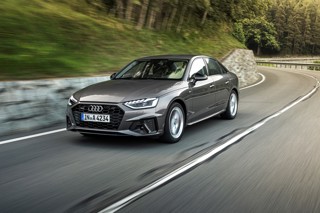The split between business/fleet funding and private/retail for cars has changed dramatically over the past year.
Private/retail now accounts for 18% of the FN50’s car risk fleet, up from 12.8% in 2018, reflecting the increasing popularity of personal contract hire (PCH) products.
“There’s nothing new about the ‘cash or car’ conundrum,” says Ben Creswick, managing director of JCT600 VLS.
“However, there is no doubt the radical changes to the industry over the past 24 months have made this conversation much more prevalent.”
Where a company wishes to support employees by offering an alternative, JCT600 VLS says this has been done through a ‘structured’ PCH offering, where duty of care is tightly controlled and, typically, the financial model is based on a business mileage reimbursement mechanism, rather than pure salary.
However, as with all historical fluctuations in the company car market, Creswick says this is not applicable to the entire populace.
He explains: “For the majority of our customers’ core fleet requirements, business contract hire remains the most cost-effective for the business and the driver.
“While (JCT600) VLS has not seen a material change to PCH, what we have witnessed in the overall marketplace is an aggressive push into ‘affinity’ PCH, as a way of mitigating poor levels of traditional BCH (business contract hire) growth, or to soften the degree of fleet shrinkage within leasing companies.”
The impact of OpRA
The British Vehicle Rental and Leasing Association (BVRLA) says PCH accounted for 68% of all new leasing broker car contracts in 2018 and, across its membership, personal contracts saw the highest level of growth at 14%, accounting for nearly 1.9 million vehicles.
Looking at all the funding methods offered by the top 50 leasing companies, contract hire/operating lease retains its dominant position for financing cars.
Out of the 1.26 million cars on the FN50’s risk fleet, 92% are classed as an operating lease, where the leasing company takes the residual value risk. That is up slightly year-on-year from 91% in 2018; contract hire/finance lease also increased, from 2% to 3.1%.
Salary sacrifice retained its risk fleet share, with 3.9% of cars funded this way compared with 4% in 2018.
Meanwhile, employee car ownership (ECO) schemes (0.4%) and others (0.6%) both saw slight declines.
Ashley Barnett, head of consultancy at Lex Autolease, says: “Since the introduction of Optional Remuneration Arrangements (OpRA) in 2017, which saw employees taxed on the greater of the cash allowance foregone or the company car benefit, we saw increased complexity added to employee car ownership schemes and salary sacrifice arrangements.
“Many customers using these products exited, and new interest reduced.
"This saw contract hire continue to be the funding product of choice for the traditional company car user.
“Perk users who have the option to take a cash alternative are showing continued interested in PCH as they move away from traditional company car schemes into the consumer market.
“Most are using this option as a means of avoiding restrictions typically associated with company car policies such as emissions caps and restrictions on makes and models that often aren’t monitored in grey fleet.”
Using car leasing to bring in the outliers
Arval says an increasing number of businesses also believe it is an attractive employee benefit to offer car leasing options to staff who would not typically qualify for a company car.
“Major employers are introducing affinity schemes that provide a fully funded, maintained and insured car for a single monthly payment,” it says.
Its Mobility Observatory research found that almost a third (29%) of businesses with more than 1,000 employees offer some form of non-company car leasing. That compared with 16% of those with 100-999 employees, 6% of with 10-99 employees and 2% with fewer than 10 employees.
Overall, it says a cash allowance for a car is the most popular form of provision, followed by salary sacrifice at 6%, personal contract hire at 2%, affinity schemes at 2% and personal contract purchase at 1%.
Arval, like many of the FN50, offers PCH products and other alternatives to the traditional company car.
“These have been growing, especially over the last year, because of the long period of uncertainty surrounding company car taxation and WLTP,” it says.
The absence of future benefit-in-kind (BIK) rates, and uncertainty over how the tax regime would adapt to the new emissions test – the Worldwide harmonised Light vehicle Test Procedure (WLTP) – had been blamed, in part, for falling company car numbers.
BIK statistics, published by HMRC in the summer, showed the number of company car drivers had fallen by 50,000 year-on-year.
However, tax officials said initial analysis suggested a new way of reporting company car tax could have skewed the figures.
How many company car users are there?
Since 2009-10, the number of company car users had remained relatively stable (at just under a million). But, the latest data indicated a dramatic fall from 940,000 in 2016/17 to 890,000 in 2017/18 – a 5.3% decline.
Another company car market indicator, fleet and business sales, shows registrations down by 1.7% last year, according to data from the Society of Motor Manufacturers and Traders (SMMT).
However, that could simply be due to employees and companies keeping cars for longer as they awaited BIK clarification, rather than a reduction in company cars.
The tax picture was finally clarified last summer, with the Treasury publishing two tax tables, one for cars registered before April 2020, and one for those registered after. BIK rates were also published up to April 2023, and there was a new 0% BIK rate for pure electric vehicles (EVs).
Leasing companies report a surge in fleet orders, with company car drivers and businesses eager to take advantage of the tax rates for the cleanest cars.
Arval says: “It’s important to recognise the reason people have been moving out of company cars has been the ongoing uncertainty around their personal tax, rather than any structural change in its effectiveness as a business tool or employee benefit. Faced with an unknown cost, they have been using the cash option to fund a PCH, effectively the nearest alternative.”
It is a trend reported by many in the FN50. Dominic Graf, head of commercial performance at Alphabet, explains: “We’re not seeing any significant movement in the funding methods being used by businesses to give employees access to cars; what we are seeing is a change in how they gain access to these funding products.”
Over the past 12 months, it has seen a 120% increase in its private/retail fleet – albeit from a low base – as employees opting out, or being provided with a cash allowance, look at PCH options.
Lex Autolease has also seen an increase in interest from previous company car drivers in PCH products, but Barnett warns: “Many should take care when seeing deals with low mileage, needing to realise that this presents a new restriction compared with the company car environment, and that, along with wear and tear, might lead to additional charges.”
LeasePlan created Select and Drive, a members-only, employer-endorsed web platform, to offer cash-taking employees access to cars.
Matthew Walters, head of consultancy and customer data services at LeasePlan UK, predicts: “Segmenting your fleet to various populations to ensure the fleet provision is right for the employee and the business will become an important factor in ensuring that the fleet strategy is future-proof for tomorrow.”






















Login to comment
Comments
No comments have been made yet.